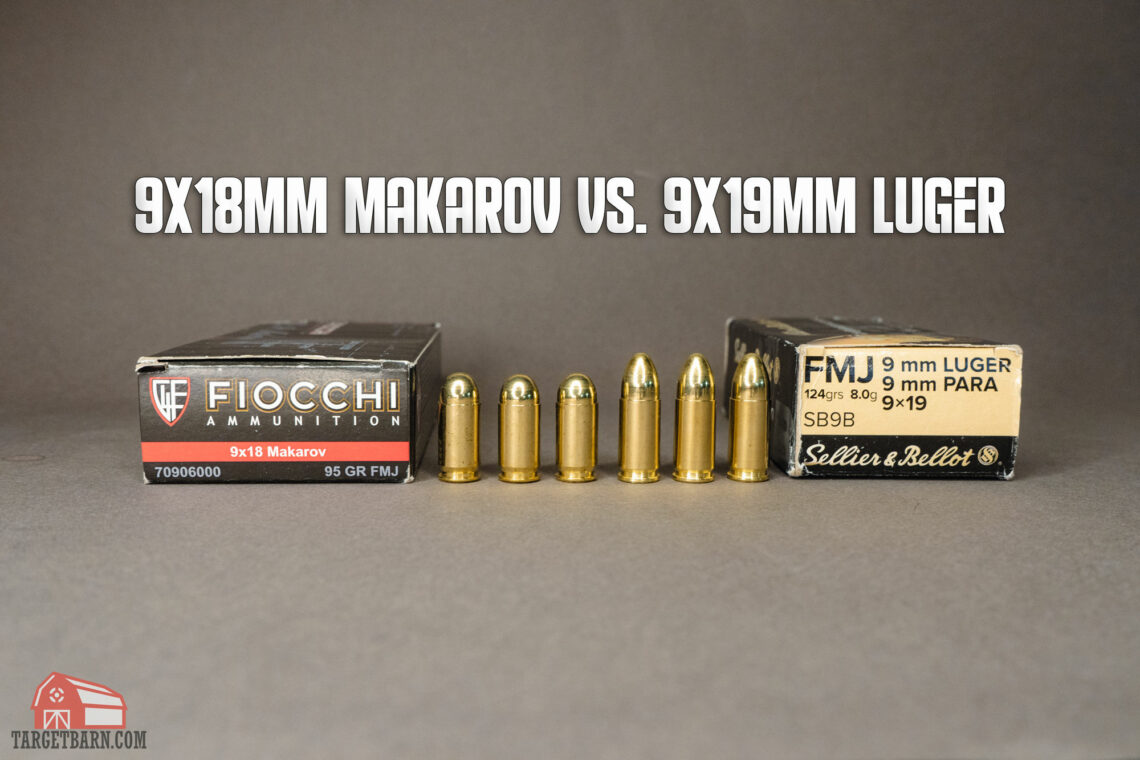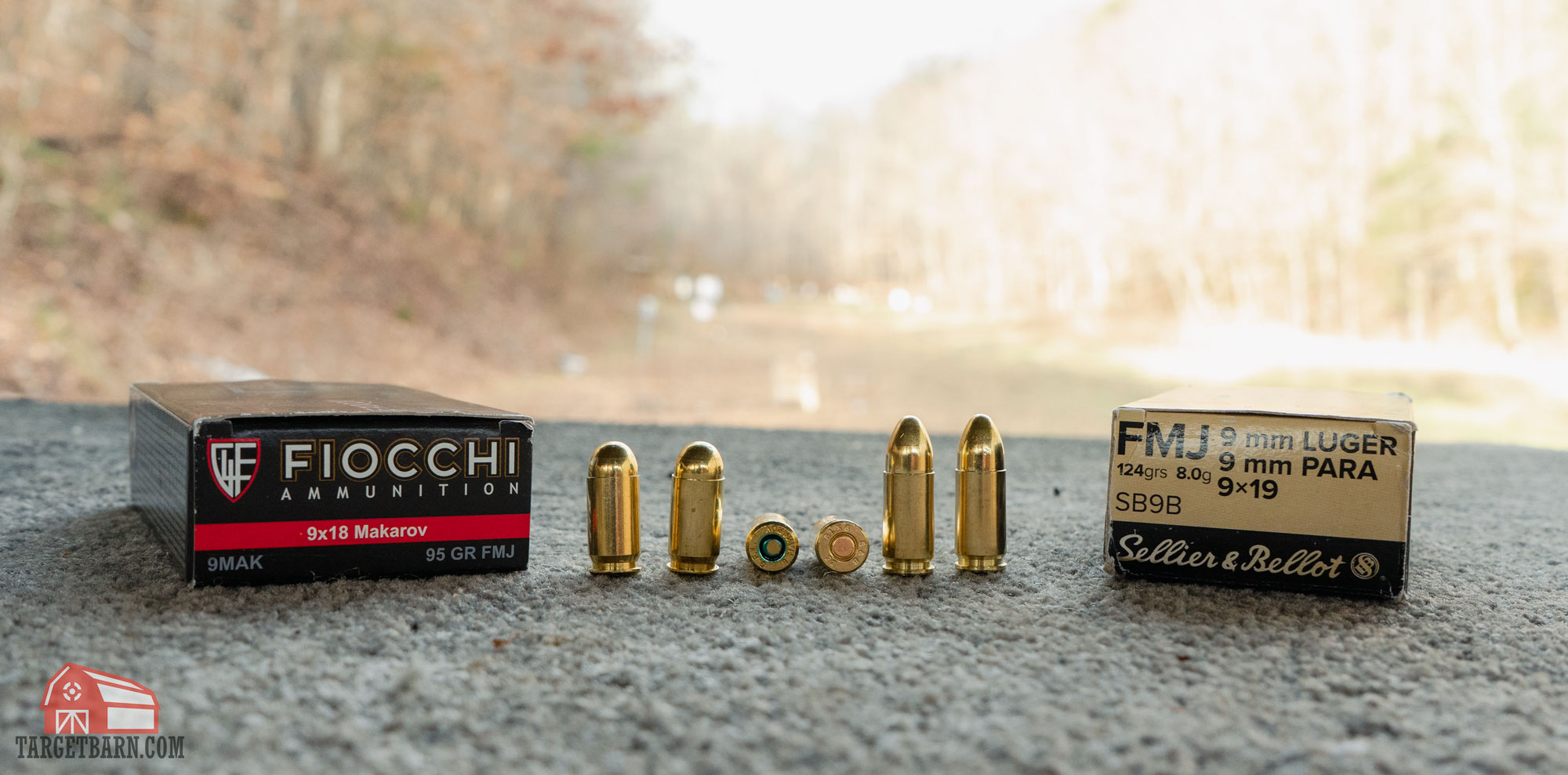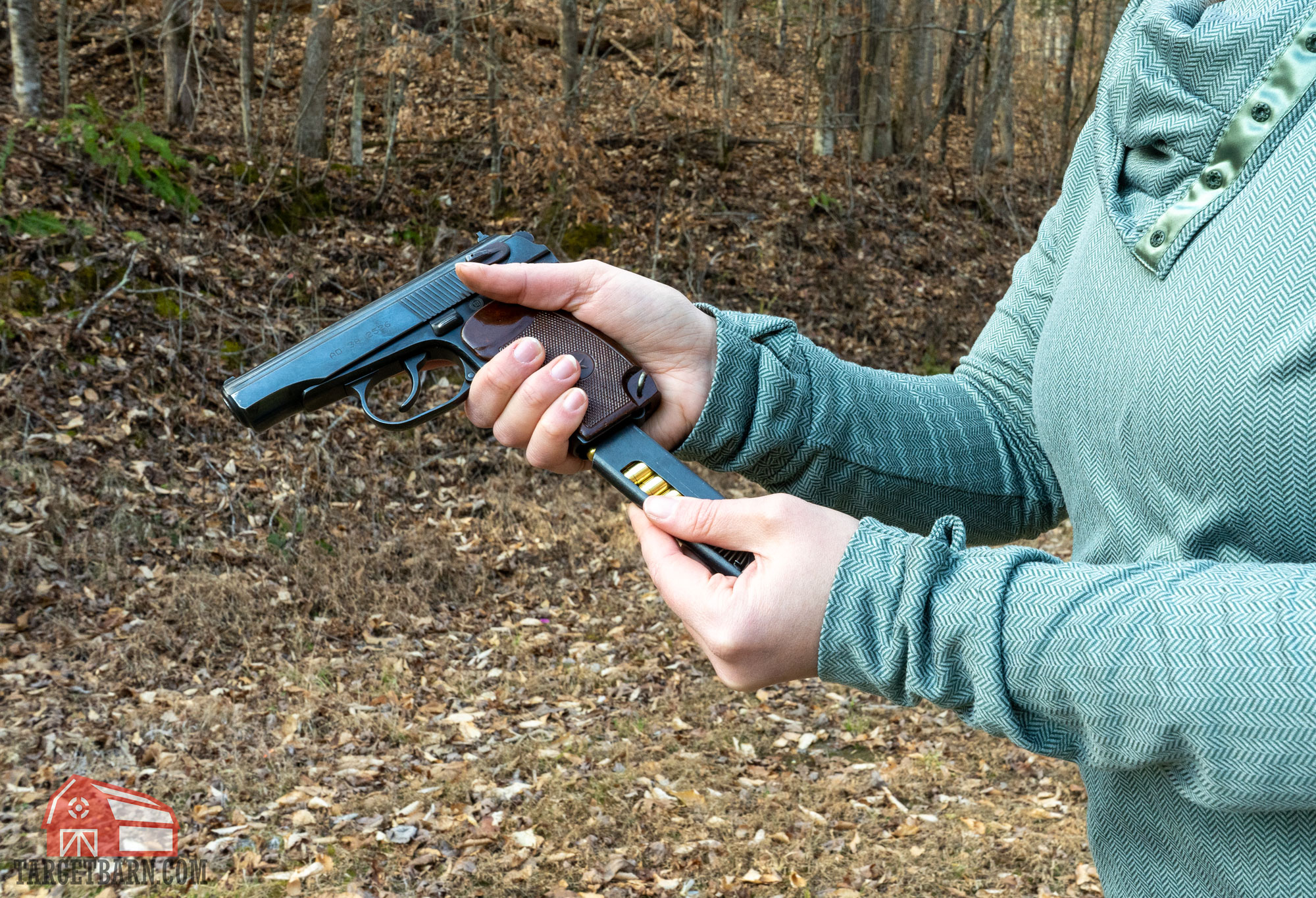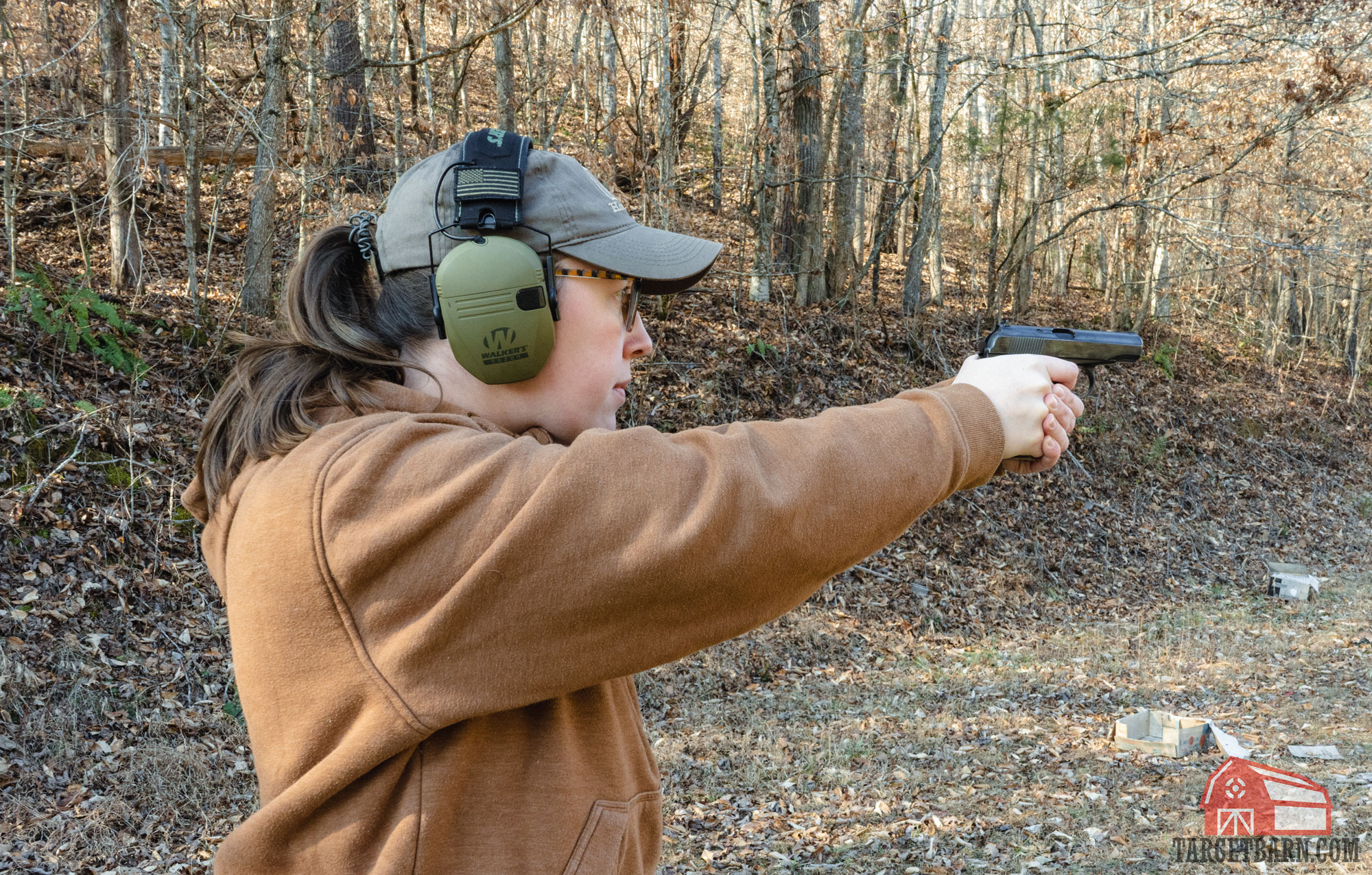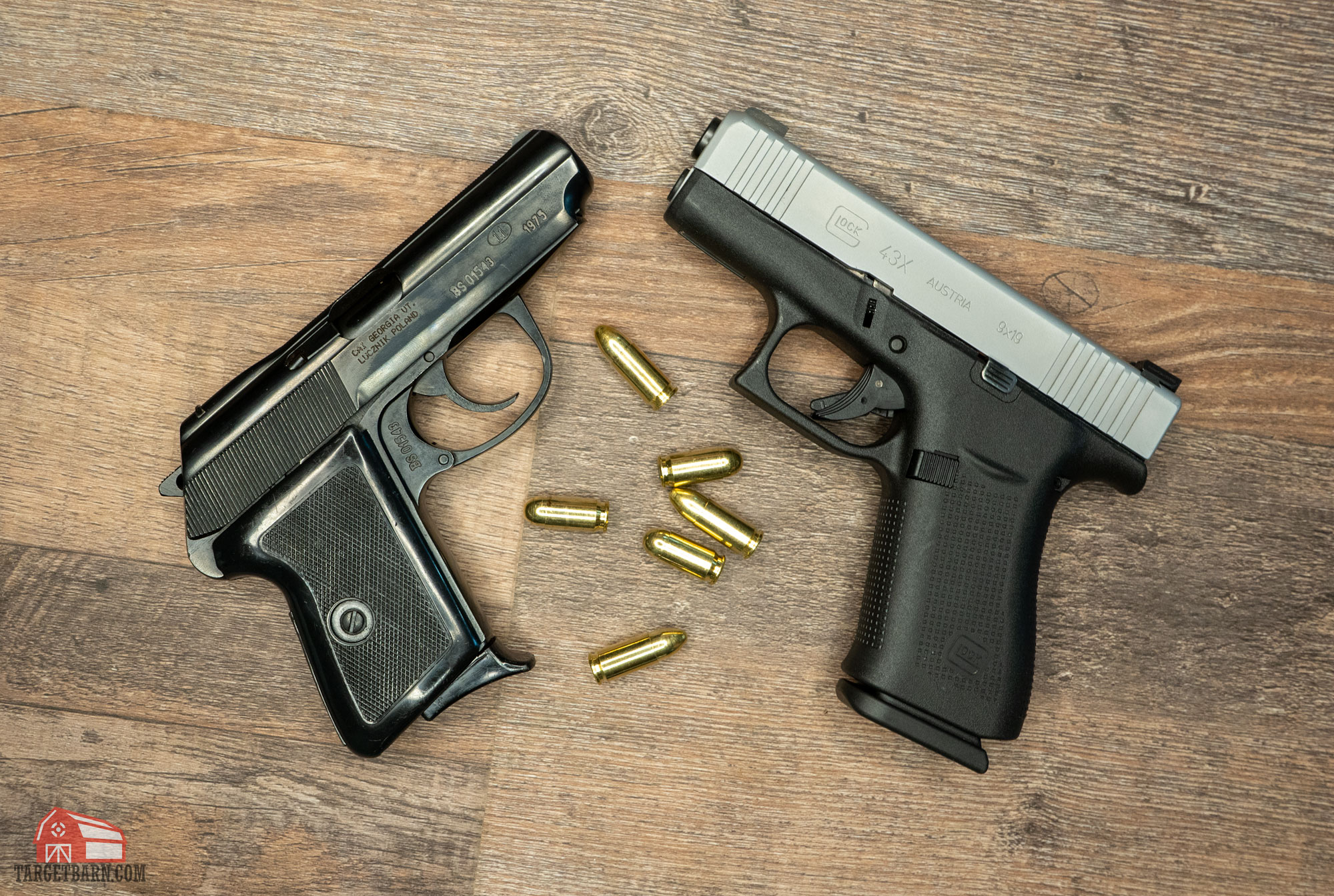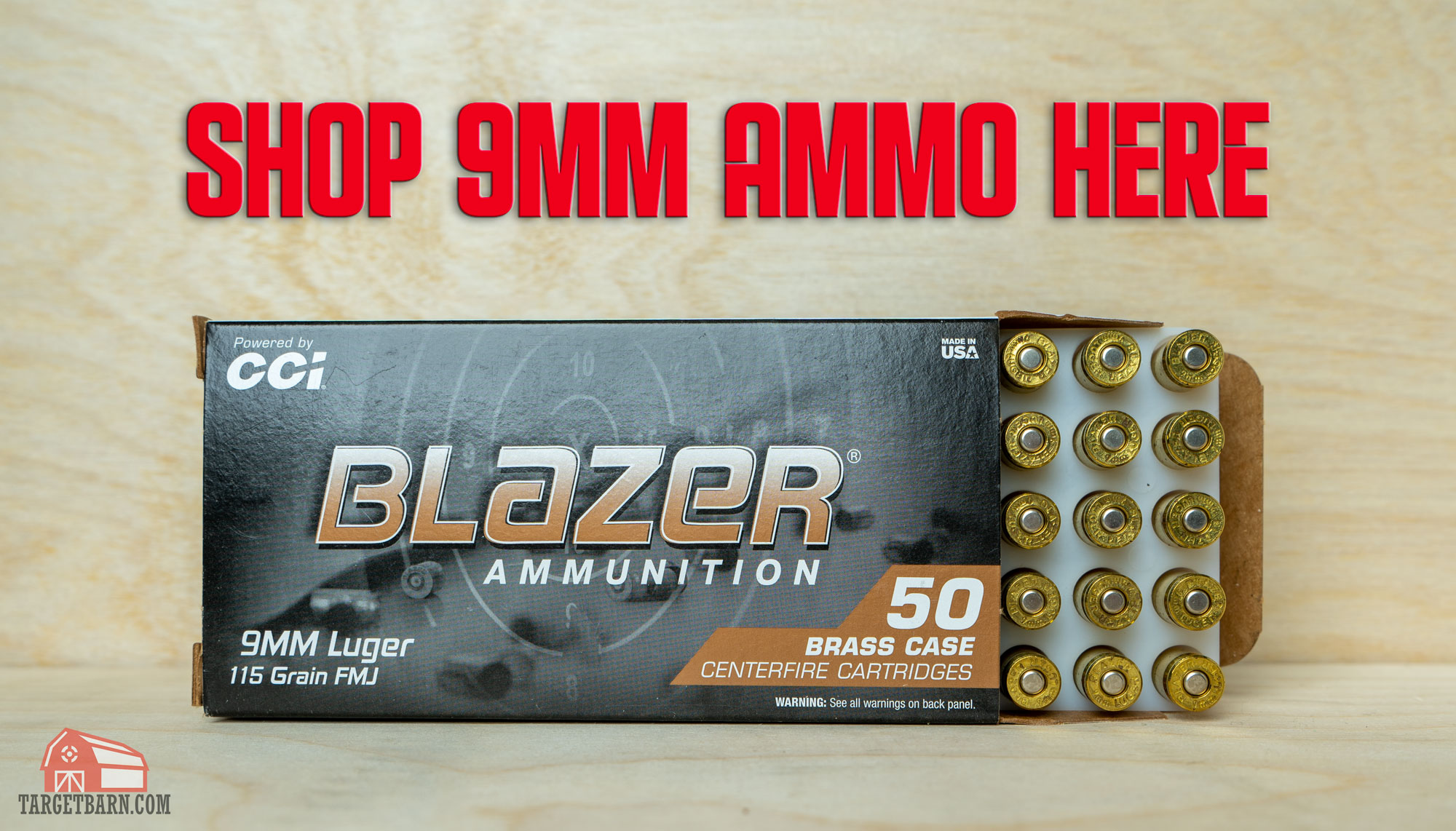When it comes to 9mm cartridges, many shooters don’t know the difference between the 9mm Makarov vs. 9mm Luger. It’s not uncommon for a newer shooter to inadvertently buy 9x18mm Makarov ammo for their 9mm Luger pistol. Unfortunately, this ends up being a waste of money. That’s because trying to chamber 9mm Makarov in a 9mm Luger firearm is just as productive as attempting to stuff a VHS tape into a DVD player.
To help prevent this mistake, we’re breaking down the differences between the 9mm Makarov vs. 9mm Luger.
9mm Makarov vs. 9mm Luger
The 9x18mm Makarov and 9mm Luger are not interchangeable. If you attempt to chamber a 9mm Makarov cartridge in a 9mm Luger firearm, the slide won’t go into battery. Even if the slide could go into battery, the 9mm Makarov’s wider bullet would not pass through the barrel. It would be a bad time all around.
Despite sharing “9mm” in their names, the two rounds have dissimilar origins. The 9mm Luger (also known as 9x19mm Parabellum, 9mm Parabellum, and simply 9mm) is named after its creator Georg Luger, an Austrian who introduced the cartridge around the turn of the century. Germany’s military was the first to adopt the 9mm. Today it is essentially the default military and police sidearm ammunition worldwide.
The 9mm Makarov cartridge was designed by Boris V. Semin in 1946. His boss, the Soviet Union, wanted its military to have a more reliable sidearm than the 7.62x25mm Tokarev TT-33 (which had frequently proven itself incapable of retaining its own magazine during WWII). Semin upgraded the German 9x18mm Ultra cartridge so it would reliably cycle the USSR’s new direct blowback Makarov PM pistol.
Why does the 9mm Makarov have a larger diameter bullet than other 9mm rounds? Because the USSR measured calibers between the lands of the rifling instead of its grooves. The Makarov PM’s grooves aren’t very deep, but they’re deep enough to make the 9mm Makarov’s bullet 1/100” wider in diameter.
All of this is to reiterate the most important thing you can take away from the 9mm Luger vs. 9mm Makarov debate: they aren’t the same ammo. But just how different are they?
9×19 vs. 9×18: Cartridge Dimensions
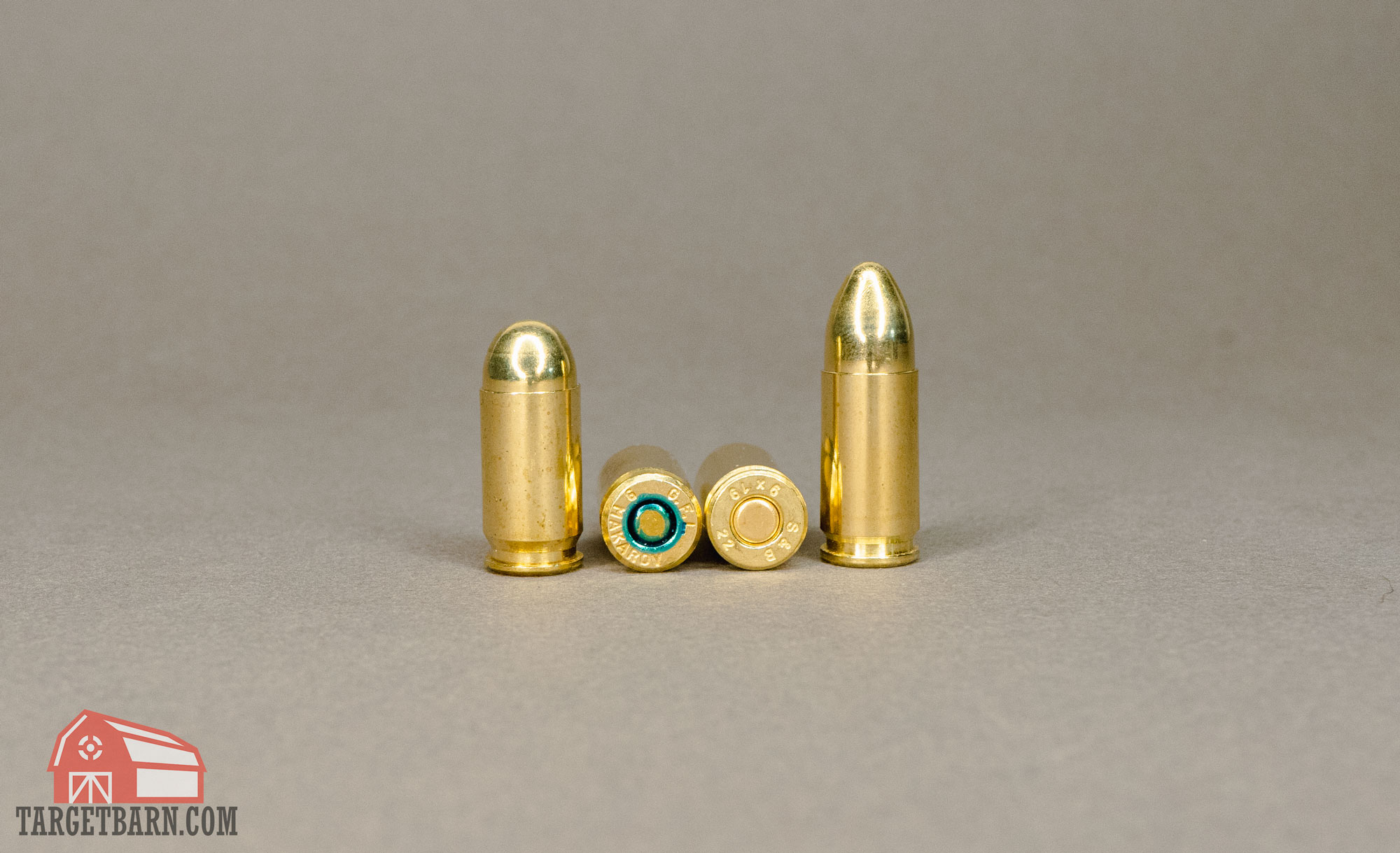
| 9x19 Luger | 9x18 Makarov | |
|---|---|---|
| Parent case | 7.65x21mm | 9x18mm Ultra |
| Case type | Rimless, tapered | Rimless, tapered |
| Bullet diameter | 0.355 in | 0.365 in |
| Neck diameter | 0.380 in | 0.390 in |
| Base diameter | 0.391 in | 0.392 in |
| Rim diameter | 0.392 in | 0.392 in |
| Rim thickness | 0.050 in | 0.049 in |
| Case length | 0.754 in | 0.713 in |
| Overall length | 1.169 in | 0.984 in |
| Case capacity | 13.30 gr H2O | 12.8 gr H2O |
| Maximum pressure | 35,000 psi | 23,500 psi |
The 9mm Makarov may have a slightly wider bullet, but it is an altogether smaller handgun cartridge. It is 0.185” shorter in length, has a smaller case capacity (i.e. less room for propellant), and produces a significantly lower chamber pressure upon ignition. Paradoxically, the 9mm Makarov’s wider bullet is also lighter. Whereas 9mm Luger bullets weighing 115, 124 and 147 grains are all common, most 9mm Makarov rounds’ bullets weigh 95 grains or very close to it.
In summary, the 9mm Makarov propels a lighter bullet, and it does so at a lower velocity. Let’s see how that kind of performance compares to the 9mm Luger.
9mm Makarov vs. 9mm Luger: Ballistic Performance
You don’t have to be a master ballistician to assume that a lighter, slower-moving bullet will exhibit a steeper trajectory. The 9mm Makarov bullet’s lower velocity means that it takes longer to reach the same distances as a 9mm Luger. This means that the bullet effectively gives gravity more time to pull it down to earth.
9x19 vs 9x18 Ballistics
| Sellier & Bellot 9mm Luger 115gr FMJ | Prvi Partizan 9mm Makarov 93gr FMJ | Sellier & Bellot 9mm Luger 124gr FMJ | Sellier & Bellot 9mm Makarov 95gr FMJ | Prvi Partizan 9mm Luger 124gr JHP | Prvi Partizan 9mm Makarov 95gr JHP | |
|---|---|---|---|---|---|---|
| Muzzle velocity (fps) | 1280 | 1050 | 1181 | 1017 | 1132 | 1017 |
| Velocity @ 25 yds | 1175 | 999 | 1084 | 973 | 1040 | 972 |
| Velocity @ 50 yds | 1094 | 957 | 1013 | 935 | 974 | 933 |
| Velocity @ 100 yds | 981 | 889 | 913 | 872 | 877 | 869 |
| G1 ballistic coefficient | 0.106 | 0.113 | 0.089 | 0.115 | 0.080 | 0.112 |
| Drop @ 25 yds | 0 | 0 | 0 | 0 | 0 | 0 |
| Drop @ 50 yds | -0.1 | -0.7 | -0.4 | -0.8 | -0.5 | -0.8 |
| Drop @ 100 yds | -6.0 | -9.4 | -7.7 | -10.1 | -8.7 | -10.1 |
| Muzzle energy (ft lbs) | 421 | 228 | 384 | 218 | 353 | 218 |
| Energy @ 25 yds | 353 | 206 | 323 | 200 | 298 | 199 |
| Energy @ 50 yds | 305 | 189 | 283 | 184 | 261 | 184 |
| Energy @ 100 yds | 246 | 163 | 229 | 161 | 212 | 159 |
The 9mm Luger bullet doesn’t merely exit the barrel faster. Its greater heft also enables the bullet to conserve more momentum. This helps it to retain more kinetic energy and resist wind deflection in flight. One of the 9mm Luger key’s advantages speaks for itself in our ballistic data: the bullet hugs a flatter trajectory. That makes the 9mm Luger easier to aim, although it does not necessarily make it more accurate. If you become accustomed to the 9mm Makarov’s more pronounced bullet drop, you’ll find yourself more than capable of striking a target within its effective range of 55 yards.
Stopping Power
“Stopping power” is a contentious phrase. It implies that some single aspect of a cartridge’s terminal performance determines its efficacy for self-defense. In fact, several factors determine how effectively a cartridge can halt a determined threat’s advance. Those factors include bullet diameter, sectional density, and propensity for terminal expansion.
Of course, the greatest factor of all is the shooter’s own skill. A weak handgun in the hands of a skilled shooter has more potential than a powerful handgun in the hands of a monkey. (There’s a gunfight we’d pay money to see.)
But the force with which a bullet strikes its target is surely the most significant factor that determines stopping power. Luckily, that’s easy to measure. The amount of kinetic energy a bullet possesses at impact is the product of two variables: mass and velocity.
As a general rule, if you are firing in self-defense, you want your bullets to hit the threat with at least 220 to 300 ft lbs of energy. The 9mm’s heavier and higher-velocity bullet can easily retain over 220 ft lbs of energy until 100 yards. Up close it can exceed the minimum advised threshold significantly. In contrast, if the 9mm Makarov bullet’s kinetic energy ever exceeds 220 ft lbs, it only does so for a few yards past the muzzle. Once again, shot placement counts for a lot, but you want to bring enough gun to a life-threatening altercation.
Recoil
Lower recoil is good for a number of reasons. In a defensive shooting scenario, less recoil means your barrel won’t jerk upward as much every time you fire. Put another way, lower recoil makes it easier to keep your sights on target.
Perceived recoil is impossible to measure. It is subjective – we cannot measure what you’ll feel. However, many shooters note the difference in recoil between the two rounds. Despite it being the more powerful round, shooters often find the recoil of the 9mm less than that of the 9mm Makarov. A lot of factors affect recoil, however there’s likely one big reason for this: handgun action design.
You see, most 9mm Makarov pistols are blowback action. In a blowback action pistol, the slide is held closed by its mass and a recoil spring and the barrel does not move when a round is fired. Whereas most modern 9mm pistols are short recoil operated, also known as locked-breech pistols. When a round is fired out of a recoil operated pistols, the barrel and slide move together for a portion of the cycling of the slide. These recoil operated pistols can handle the higher pressure rounds like the 9mm.
The felt recoil is noticeably different between blowback action and recoil operated pistols. Blowback 9mm Makarov pistols have a snappy recoil, while the recoil operated 9mm have what feels like more of a push. This could be because the slide moves a little slower with recoil operated pistols, giving more time for the shooter to absorb the recoil force.
Price and Availability
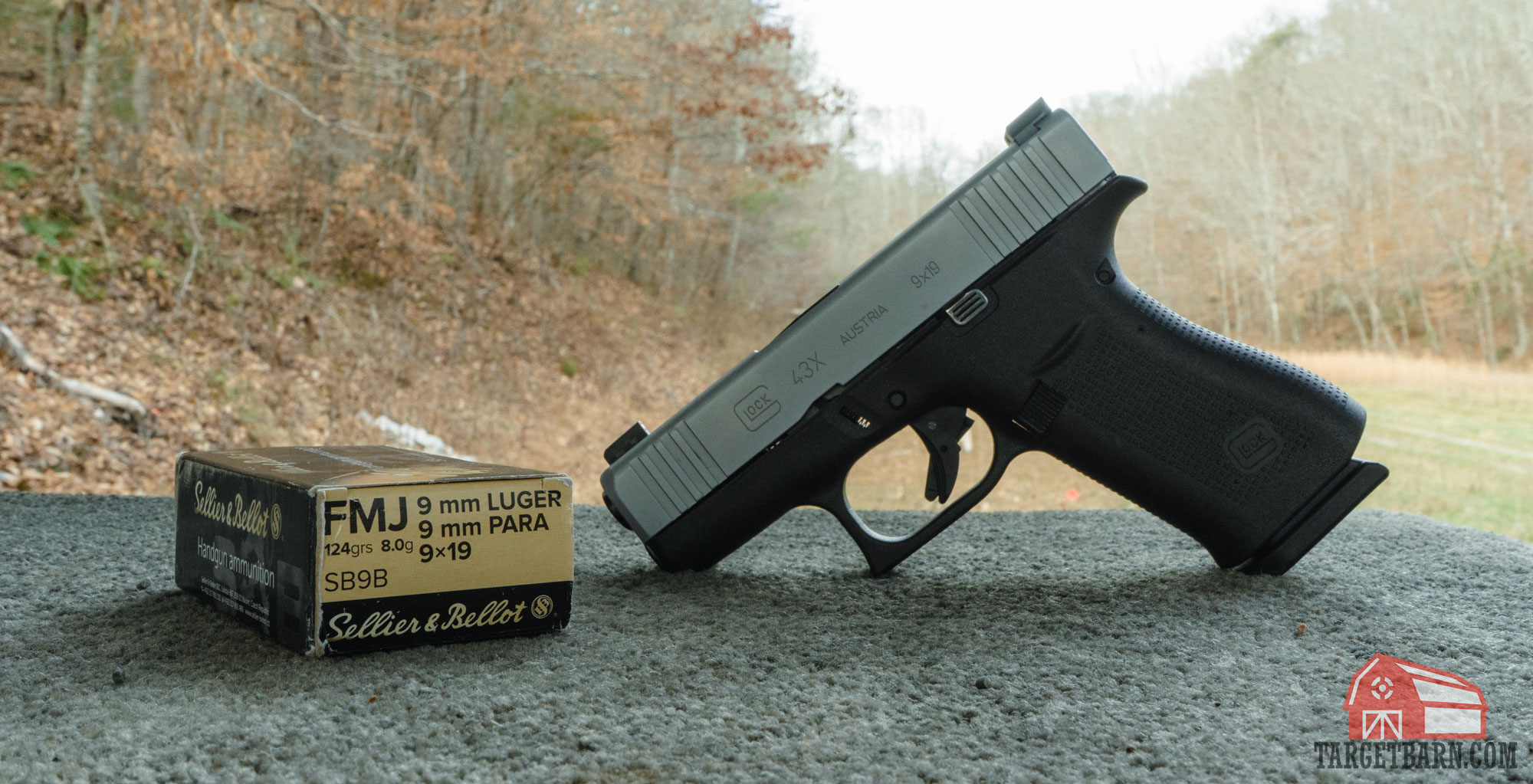
The 9mm Luger cartridge contains more lead, more brass, and more propellant. In addition to requiring more raw materials for its production, the 9mm Luger cartridge also is heavier. This can make shipping more expensive for manufacturers and retailers.
9mm Luger ammo is still cheaper than 9mm Makarov despite all of that for one reason: greater demand. Manufacturers produce staggering amounts of the most popular centerfire handgun ammunition on the planet, which offsets its relatively greater production costs.
9mm Luger is naturally far easier to find online and in stores. 9mm Makarov is beloved by many Americans. However, the ammo really only saw military and police service in Russia and Eastern Bloc countries. It will never be as popular here as the 9mm Luger, which most police departments utilize in the field and which is also the standard handgun ammunition for the U.S. Armed Forces. Likewise, 9mm Luger handguns are far easier to find than 9mm Makarov.
9mm Makarov vs. 9mm Luger: Takeaway
While the 9mm Makarov is a cool round for those who like Eastern European guns, it doesn’t have many advantages over the 9mm Luger. The 9mm round has a flatter trajectory and higher likelihood of neutralizing a threat in one shot. It is also much more affordable and available.
Is the 9mm Makarov bad? Not at all. It’s a joy to fire, and those Russian and Eastern Bloc handguns are plenty effective for self-defense just like they are beautifully designed. By all means, buy a 9mm Makarov pistol and enjoy every second you spend owning it. But if you’re looking for a good pistol for self defense, it’s hard to do much better than 9mm Luger.
And remember: 9mm Luger won’t work in a 9mm Makarov handgun, and vice versa.

